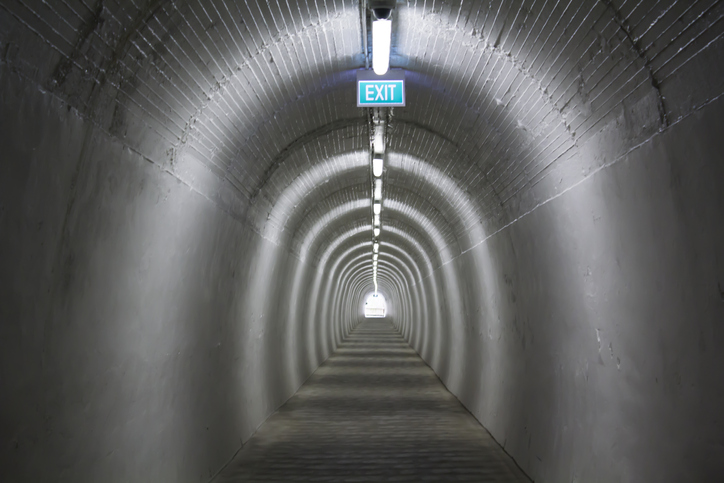Digital Goes Underground In NZ
- By Lachlan Colquhoun
- July 17, 2023

Underneath the New Zealand capital of Wellington is a labyrinth of underground pipes and cables which help keep the city’s infrastructure running.
Since the city was founded, all records of these underground assets were kept on paper-based systems. Some of the records were decades old, almost like historical maps in a museum.
Currently, New Zealand has no central record system for below-ground infrastructure.
Data is siloed in separate utilities, most of which are compiled manually and stored in different formats according to different standards. Records are often incomplete, and sometimes they go missing.
Under a new program, however, these essential public assets are going digital. It is another example of how municipal authorities turn to digital twinning models to store records and improve planning efficiency.
The city council is implementing the Wellington Underground Asset Map (WUAM) program, which will digitize information on water assets, telecommunication cables, gas pipes and other services.
The vision is for a federated data-sharing platform showing subsurface infrastructure owned by the council and other utility operators.
Data will flow into this platform, and all stakeholders in the sector can have 24/7 access to what is called a federated subsurface asset register or subsurface digital twin.
Global twins
The planners are following the model of similar platforms in the U.K., where there is the National Underground Asset Register, Scotland’s Vault record system, and Singapore, a leader in digital twinning.
Current legacy also often results in accidents and delays. In the U.K., for example, around one in 65 holes that are dug results in an accidental asset strike which causes around GBP2.4 billion pounds in economic cost and puts workers’ lives and health at risk.
The U.K. response has been the National Underground Asset Register, which is expected to deliver at least GBP350 million annually in improved economic benefits through improved efficiency and fewer asset strikes.
“We were scrambling for data, and I think the lesson for me is all around how data is used, the decision making and the robustness around quality data sets.”
Phase one of NUAR contains data from the public and private sector organizations which own pipes and cables in the north-east of England, Wales and London.
This includes all the major energy and water providers, like Northumbrian Water, Wales and West Utilities, Southern Electric Power Distribution and National Grid, as well as smaller providers of these services, telecommunications companies, transport organizations and local authorities.
Going nationwide
The designers of the Wellington map are also looking well beyond their city. The goal is to build a system and support compliance policies that can be scaled up for the whole of New Zealand.
In part, this is one of the lessons of the Christchurch earthquake. David Pinkney is originally from the U.K. but has lived in Christchurch for many years, including experiencing the 2011 earthquake, which took the lives of 185 people and reduced 80% of the city center to rubble.
Pinkney worked with SCIRT, the Stronger Christchurch Infrastructure Rebuild Team, which was part of the decade-long NZD40 billion reconstruction of the city, and he is now back on the Christchurch Council, where he is an asset manager responsible for wastewater.
Looking back on the earthquake experience, Pinkney observes, "We didn’t really appreciate the value of data.”
“When we started on this journey, data was just something you used for one job and then moved on to the next,” he says.
He says aggregating data from different sources and making it usable and available is critical to improving asset management practice.
Better data management can deliver a better understanding of assets, improve how they perform in stressful situations—such as another earthquake—and provide a guide and template for how to respond in the future.
Christchurch already has implemented a Spatial Open Data Portal as a place to find publicly accessible, authoritative, spatial datasets spanning infrastructure assets, planning rules and natural and cultural heritage.
David Pinkney is enthusiastic about integrating geospatial data into design software and asset management systems and moving away from “data capsules” to a national approach so that “if the west coast falls over, we have access to their systems on the cloud.”
In responding to these issues, the City of Christchurch is now collaborating on a project for national standards for data transfer between private and public organizations.
“We were scrambling for data, and I think the lesson for me is all around how data is used, the decision making and the robustness around quality data sets and how you can leverage that,” Pinkney says.
Lachlan Colquhoun is the Australia and New Zealand correspondent for CDOTrends and the NextGenConnectivity editor. He remains fascinated with how businesses reinvent themselves through digital technology to solve existing issues and change their entire business models. You can reach him at [email protected].
Image credit: iStockphoto/rfranca









